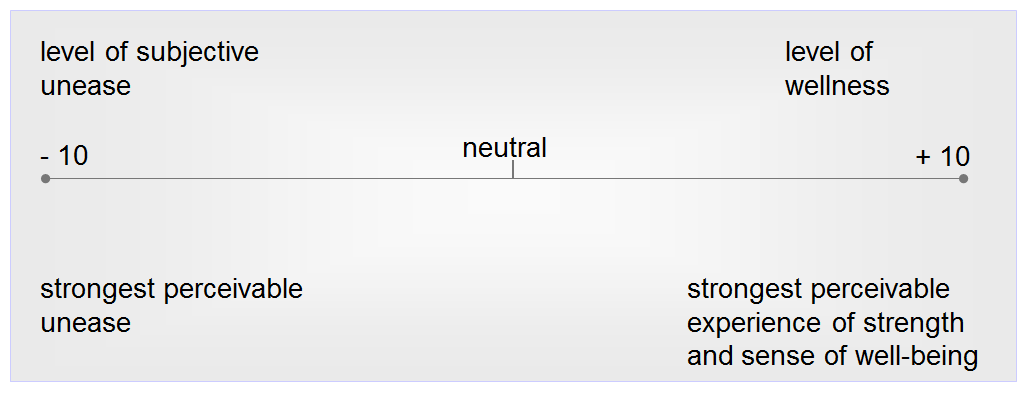Coaching examples
Giving a speech
A CEO prepares for an important speech in front of a large audience. For this kind of cooperation between coach and coachee, it should be assumed that the speech itself is well-prepared in terms of content. During his speech, the coachee wants to convey himself as convincing and eloquent and also wants to prepare himself to react with good arguments on critical questions.
Coach and coachee go through potential scenes and the audience’s reaction to the speech, including memories of similar performances in the past that did not go well. The coach applies a muscle reaction test (Myostatic test) to determine possible stress reactions on all those scenes. Whenever the coachee feels uncomfortable while remembering a certain scene, the muscle reaction test is weak.
The client now rates his memories of those stressful past events on a bi-polar scale from -10 to + 10.
Rating the Memories on a Bipolar Scale

With a “body scan”, the coachee now checks where exactly in his body he feels the negative emotions that are connected with the past event: a punch in the stomach, a constricted throat, a pressure on the chest, a tight neck, etc. Now the intervention starts. A waving sequence of 24 back and forth movements is called a set. During the waving, the coachee focuses on the image of the unpleasant event and on the emotion connected with the sensations he feels in his body. Just six to eight sets later, the client feels liberated from those unpleasant thoughts and the emotions connected with them. His shoulder muscles relax, his throat feels free, his stomach is pleasantly warm and relaxed, and the muscle reaction test is strong. This relaxed feeling persists even when he now thinks of the prior stressful scene. At this point, the client concentrates with the body scan on the most pleasant and strong body feeling that comes up when thinking of the speech. The following waving sets enforce an intensification of this resource feeling. Now the client’s rating of his emotions are on the positive side of the scale: “I am now really looking forward to the speech.”
This coaching session is optimized (or a second one) when taking place in the exact location where the coachee will give his speech i.e. the very stage with a view of all the chairs. This process is called “In-vivo coaching.”
The wingwave-coaching process initiates the creation of neuronal connections for resourceful and strong reactions and emotions during the performance in question. “I was in top form, completely natural and without any effort,” says the CEO as he describes his performance one week after the speech.













